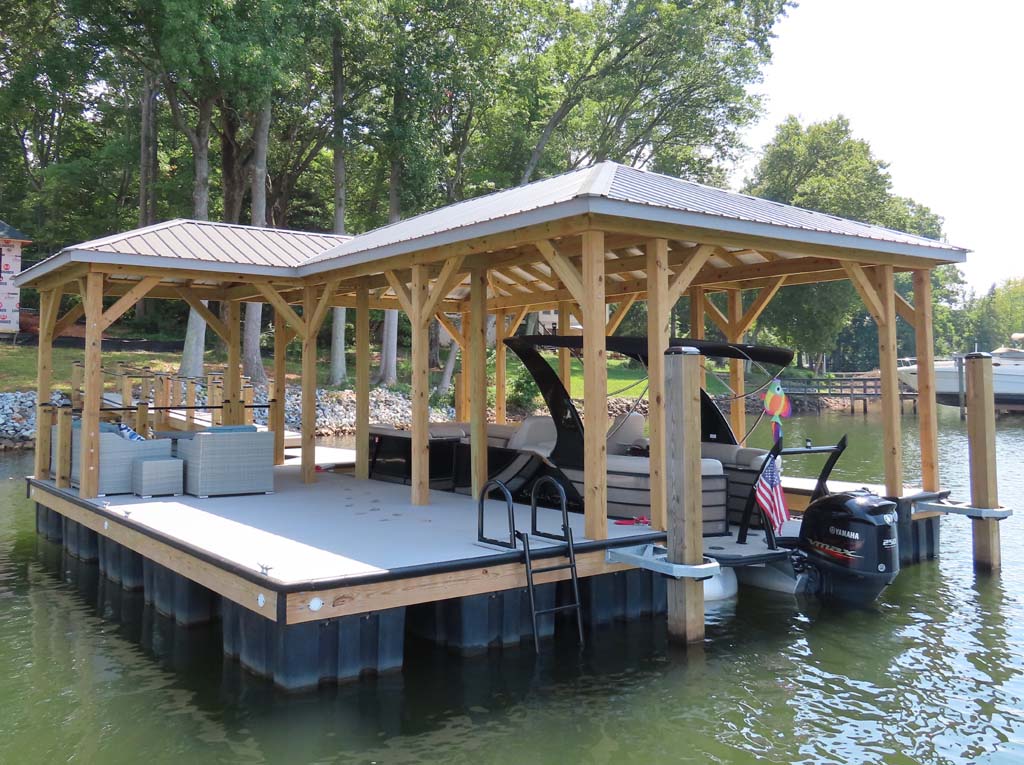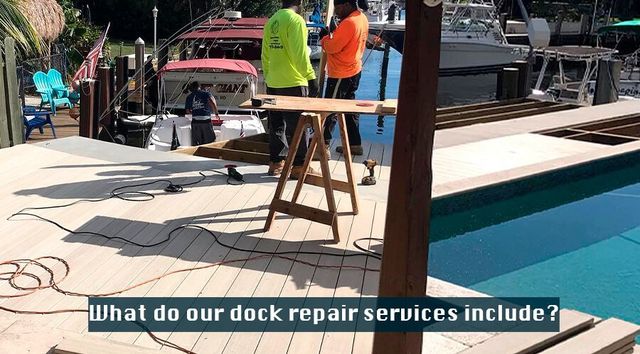Top Indications You Required Professional Dock Repairs This Season
Wiki Article
Efficient Dock Fixing Techniques: Making Sure Architectural Integrity
Making certain the structural stability of anchors via effective repair work strategies is paramount for the durability and security of marine centers. This includes a multi-faceted approach starting with comprehensive assessments making use of advanced modern technologies like sonar equipment and from another location operated vehicles (ROVs) to detect both noticeable and hid damages. Subsequently, picking the best repair service products, such as composite products and corrosion-resistant alloys, is critical for durability. Structural reinforcement techniques, consisting of the implementation of cross-bracing systems and load-distribution plates, play a crucial duty in mitigating anxiety factors. The significance of these strategies comes to be apparent when discovering advanced fixing approaches and preventative maintenance techniques.Evaluating Dock Damage
Evaluating dock damages is a critical initial action in making sure the architectural integrity and safety and security of any type of docking facility. This preliminary assessment includes a thorough examination to determine both visible and hidden problems. Trick elements to take a look at include the dock's structure, pilings, decking, and equipment. Each component has to be looked at for signs of wear, rot, corrosion, or various other kinds of deterioration that could compromise the architectural stability.Structural engineers or certified examiners commonly do these assessments using specialized techniques and devices. For example, undersea examinations may employ sonar equipment or remotely ran lorries (ROVs) to discover immersed damages. Above water, aesthetic examinations are complemented by utilizing wetness meters and various other analysis devices to discover underlying issues not immediately visible to the nude eye.

Deciding On Repair Work Materials
Choosing the proper repair materials is a pivotal step in the dock remediation procedure, one that straight influences the long life and efficiency of the repaired framework. Product selection must be driven by variables such as environmental conditions, load-bearing demands, and compatibility with existing dock components. As an example, timber is a typical selection for docks due to its all-natural resilience and visual appeal. Choosing the right type of timber, such as pressure-treated lumber or naturally rot-resistant types like cedar or teak, is crucial to stand up to aquatic environments.Along with wood, composite materials are progressively popular due to their sturdiness and low upkeep requirements. Composites, generally made from a blend of plastic and timber fibers, supply superb resistance to rot, pests, and UV damage. For metal docks, selecting corrosion-resistant alloys such as galvanized steel or marine-grade aluminum is necessary to prevent corrosion and guarantee architectural stability in saline water conditions.
Epoxy materials and marine-grade sealants are indispensable for repairing splits and securing joints, giving a water-proof barrier and enhancing the dock's total strength. By meticulously picking high-grade products, dock repairs can accomplish durable results, thereby protecting versus future destruction and making sure secure, reputable use.
Structural Reinforcement Methods
Efficient structural reinforcement strategies are vital in ensuring the stability and longevity of dock repair services. This method is specifically efficient for anchors subjected to heavy loads or rough environmental problems.Another vital technique is the application of fiber-reinforced polymers (FRP) These products offer high strength-to-weight ratios and exceptional resistance to rust, making them perfect for reinforcing concrete or wood anchors. FRP can be applied in sheets or strips and bound with epoxy resins to boost architectural integrity.
Supporting and anchoring systems also play a vital role in architectural reinforcement. Cross-bracing, utilizing steel or wood light beams, can combat lateral pressures, lowering guiding and motion. Securing systems, such as helical piers or driven piles, offer a stable foundation by moving lots to much deeper, more stable soil layers.
Finally, the integration of load-distribution plates can help distribute weight extra uniformly throughout the dock's surface area, minimizing local anxiety points. These methods jointly ensure that anchors stay robust and risk-free, qualified of holding up against the roughness of their functional environment.
Advanced Repair Service Methods

One more advanced technique entails undersea welding, which enables repair services to be conducted without the need to dewater the area. This technique is specifically beneficial for dealing with architectural issues in immersed dock elements, making sure very little interruption to procedures. Improved welding techniques, paired with robotic systems, deliver accuracy and integrity, thereby prolonging the lifespan of the dock.
Furthermore, cathodic defense systems are carried out to avoid deterioration in metallic dock structures. By making use of sacrificial anodes or impressed current systems, these methods efficiently reduce the electrochemical processes that lead to product damage.
Lastly, progressed surveillance modern technologies, such as structural wellness surveillance (SHM) systems, offer real-time data on the problem of dock structures. These systems allow positive maintenance and prompt treatments, inevitably making certain the long-lasting structural honesty of the dock.
Upkeep and Avoidance
Upkeep and prevention are basic principles that underpin the durability and safety of dock structures. Routine evaluations are critical, enabling early detection of damage, possible weaknesses, and environmental influences. A proactive method, entailing routine look for deterioration, rot, and structural changes, reduces costly repairs and lengthens the dock's operational life.Safety nets read ought to consist of using safety finishes to steel elements to guard against corrosion and using cured wood to withstand degeneration. Furthermore, making sure appropriate water drainage and air flow can prevent water buildup, which is a common reason for architectural destruction. Including top quality products and adhering to supplier standards throughout building and construction and fixing phases additionally play important roles in improving sturdiness.

Educating employees in dock upkeep finest methods makes sure consistent application of preventative measures. Leveraging technical developments, such as drones for inspections and sensors for real-time tracking, can better enhance maintenance initiatives. By prioritizing maintenance and prevention, dock owners can guarantee structural stability, functional safety and Your Domain Name security, and cost-effective administration over the dock's lifespan.
Final Thought
In conclusion, maintaining the structural honesty of marine centers requires thorough dock fixing techniques. Advanced repair strategies, coupled with regular upkeep techniques, guarantee the dock continues to be safe and operational under varied environmental problems.Making certain the structural honesty of docks with effective fixing methods is extremely important for the long life and safety and security of marine centers.Selecting the appropriate fixing materials is a critical step in the dock restoration procedure, one that directly influences the long life and performance of the fixed framework.Effective architectural reinforcement techniques are vital in making sure the security and longevity of dock fixings. By focusing on upkeep and prevention, dock owners can make certain architectural integrity, operational safety and security, and cost-efficient monitoring over the dock's life expectancy.
In final thought, preserving the structural integrity of marine centers demands thorough dock fixing techniques.
Report this wiki page